List the advantages and disadvantages of The Wizard of Oz 3D conversion pointed out by the author.
Paraphrase the following sentences using the new vocabulary.
1) In spite of the wide popularity of 3D movies, some 3D versions turn out to be overloaded with unnecessary fake decorations. 2) Every display of a 3D film attracts a lot of spectators because of amazing visual effects. 3) This director’s last work was shot chiefly in the multicoloured scheme. 4) The film is famous for a decent amount of eye-catching scenes due to the fabulous work of the special effects department. 5) What an exquisite pleasure is to enjoy watching a breathtaking adventure film! 6) The problem is that behind all these 3D tricks the quality of screenplays is getting apparently worse. 7) To the fans’ great delight, the classical film finally got a first-class 3D adaptation. 8) The modern computer technologies endow all the film industry masterpieces with the unequaled clearness of the picture. 9) All thinkable up-to-date technical achievements are available in Hollywood. 10) Impressed with the final scene of that wonderful love story, she began to cry and her tears completely blurred the image. 11) His acting work in this soap-opera is regarded by critics as one more example of botchery. 12) The film is perfect in every detail except for the only flaw: the unnaturalness of the scenery spoils the whole impression.
Using the new vocabulary make up 10 sentences of your own (5 in English, 5 in Russian) for your group-mates to translate.
Video
VIDEO 6
(“The Wizard of Oz”, 1939)
7. Look through the film information (p. 48). Are the listed names familiar to you? What do you know of the director and the actors?
8. Read the following information to find out some facts about them before watching the film:
Victor Fleming (1889-1949)
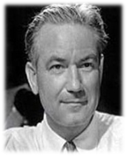 Victor Fleming entered the film business as a stuntman in 1910, as he had been a mechanic and professional race-car driver. He became interested in working on the other side of the camera, and eventually got a job as a cameraman.
Victor Fleming entered the film business as a stuntman in 1910, as he had been a mechanic and professional race-car driver. He became interested in working on the other side of the camera, and eventually got a job as a cameraman.
Soon, he began directing, and his first big hit was The Virginian (1929). Fleming’s star continued to rise during the ‘30s, and he was responsible for many of the films that would eventually be considered classics, such as Red Dust (1932), Bombshell (1933), Treasure Island (1934), and the two films that were the high marks of his career: Gone with the Wind (1939) and The Wizard of Oz (1939). Ironically Fleming was brought in on both pictures to replace other directors and smooth out the troubled productions, a feat he accomplished masterfully. His career took somewhat of a downturn in the ‘40s, and most of his films, with the exception of Dr. Jekyll and Mr. Hyde (1941), weren’t particularly successful. He ended his career with the troubled production Joan of Arc (1948), which turned out to be a major critical and financial failure.
Judy Garland (1922-1969)
(Frances Ethel Gumm)
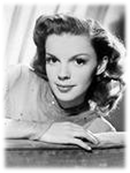 One of the brightest, most tragic movie stars of Hollywood’s Golden Era was born in a family of vaudevillians and from the early childhood travelled across America where she would perform in nightclubs, cabarets, hotels and theaters solo.
One of the brightest, most tragic movie stars of Hollywood’s Golden Era was born in a family of vaudevillians and from the early childhood travelled across America where she would perform in nightclubs, cabarets, hotels and theaters solo.
In September, 1935 she was signed by Louis B. Mayer, mogul of leading film studio MGM, after hearing her sing and her name was changed from Frances Gumm to Judy Garland. MGM set to work preparing various musicals with which to keep Judy busy. All this had its toll on the young teenager, and she was given numerous pills by the studio doctors in order to combat her tiredness. This soon resulted in her lifelong drug addiction.
In 1939, Judy shot immediately to stardom with The Wizard of Oz. Her poignant performance and sweet delivery of her signature song, ‘Over The Rainbow’, earned Judy a special juvenile Oscar statuette on 29 February 1940 for Best Performance by a Juvenile Actor. She began to play meatier adult roles and eventually became a much-loved character whose warmth and spirit, along with her rich and exuberant voice, kept theatre-goers entertained with an array of delightful musicals. Her most famous acting works are For Me and My Gal (1942), Meet Me in St. Louis (1944), The Clock (1945), The Pirate (1948), Easter Parade (1948), Summer Stock (1950).
Frank Morgan (1890-1949)
(Francis Philip Wuppermann)
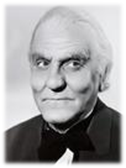 Jovial, somewhat flamboyant Frank Morgan will forever be remembered as the title character in The Wizard of Oz (1939), but he was a veteran and respected actor long before he played that part, and turned in outstanding performances both before and after that film. One of 11 children of a wealthy manufacturer, Morgan followed his older brother, Ralph Morgan (born Raphael Wuppermann) into the acting profession, making his Broadway debut in 1914 and his film debut two years later. Morgan specialized in playing courtly, sometimes eccentric or befuddled but ultimately sympathetic characters, such as the alcoholic telegraph operator in The Human Comedy (1943) or the shop owner in The Shop Around the Corner (1940). He was nominated for an Academy Award for Best Actor for The Affairs of Cellini (1934).
Jovial, somewhat flamboyant Frank Morgan will forever be remembered as the title character in The Wizard of Oz (1939), but he was a veteran and respected actor long before he played that part, and turned in outstanding performances both before and after that film. One of 11 children of a wealthy manufacturer, Morgan followed his older brother, Ralph Morgan (born Raphael Wuppermann) into the acting profession, making his Broadway debut in 1914 and his film debut two years later. Morgan specialized in playing courtly, sometimes eccentric or befuddled but ultimately sympathetic characters, such as the alcoholic telegraph operator in The Human Comedy (1943) or the shop owner in The Shop Around the Corner (1940). He was nominated for an Academy Award for Best Actor for The Affairs of Cellini (1934).
Ray Boldger (1904-1987)
(Raymond Wallace Bulcao)
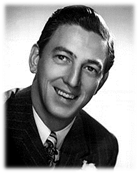 Ray Bolger began his career in vaudeville. He was half of a team called “Sanford and Bolger” and also did numerous Broadway shows on his own. He was a song-and-dance man as well as an actor. He was signed to a contract with MGM in 1936 and his first role was as himself in The Great Ziegfeld (1936). This was soon followed by a role in Rosalie (1937). His first dancing and singing role was in Sweethearts (1938), where he did the “wooden shoes” number with red-headed soprano/actress Jeanette MacDonald. This got him noticed by MGM producers and resulted in his being cast in his most famous role, that of the Scarecrow in The Wizard of Oz (1939). Surprisingly, even though the film was a success, Bolger’s contract with MGM ended. He went to RKO to make Four Jacks and a Jill (1942). After this, Bolger went to Broadway, where he received his greatest satisfaction. In 1953 he turned to television and got his own sitcom, “Where’s Raymond?” (1953), later changed to “The Ray Bolger Show”. After his series ended, Bolger made frequent guest appearances on TV and had some small roles in movies.
Ray Bolger began his career in vaudeville. He was half of a team called “Sanford and Bolger” and also did numerous Broadway shows on his own. He was a song-and-dance man as well as an actor. He was signed to a contract with MGM in 1936 and his first role was as himself in The Great Ziegfeld (1936). This was soon followed by a role in Rosalie (1937). His first dancing and singing role was in Sweethearts (1938), where he did the “wooden shoes” number with red-headed soprano/actress Jeanette MacDonald. This got him noticed by MGM producers and resulted in his being cast in his most famous role, that of the Scarecrow in The Wizard of Oz (1939). Surprisingly, even though the film was a success, Bolger’s contract with MGM ended. He went to RKO to make Four Jacks and a Jill (1942). After this, Bolger went to Broadway, where he received his greatest satisfaction. In 1953 he turned to television and got his own sitcom, “Where’s Raymond?” (1953), later changed to “The Ray Bolger Show”. After his series ended, Bolger made frequent guest appearances on TV and had some small roles in movies.
Bert Lahr (1895-1967)
(Irving Lahrheim)
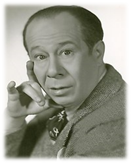 Fittingly known to be a “Leo” for his horoscope, Bert Lahr is always remembered as the Cowardly Lion in The Wizard of Oz (1939). But during his acting career, he has been known for being in burlesque, vaudeville, and Broadway.
Fittingly known to be a “Leo” for his horoscope, Bert Lahr is always remembered as the Cowardly Lion in The Wizard of Oz (1939). But during his acting career, he has been known for being in burlesque, vaudeville, and Broadway.
Dropped out of high school at the age of fifteen for a juvenile vaudeville act, Lahr worked his way up to the top billing of the Columbia Burlesque Circuit. When in Broadway, Lahr usually plays a comic actor in plays which he starred in such as the classic routine The Song of the Woodman, which he would later perform in Merry Go Round (1937). Aside from The Wizard of Oz (1939), Lahr’s movie career never caught on because his gestures and reactions were too broad.
Jack Haley (1898-1979)
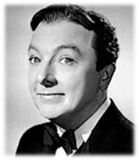 (John Joseph Haley Jr.)
(John Joseph Haley Jr.)
Jack Haley was a movie and vaudeville actor who is always remembered as the Tin Man in The Wizard of Oz (1939). The Tin Man role was originally was going to Buddy Ebsen, but due to allergic reaction from the aluminum powder makeup, Ebsen was taken out of the casting and Haley replaced him. To avoid the same problem arising, they used aluminum paste for Haley instead of the powder. Haley starred in over thirty other movies.
